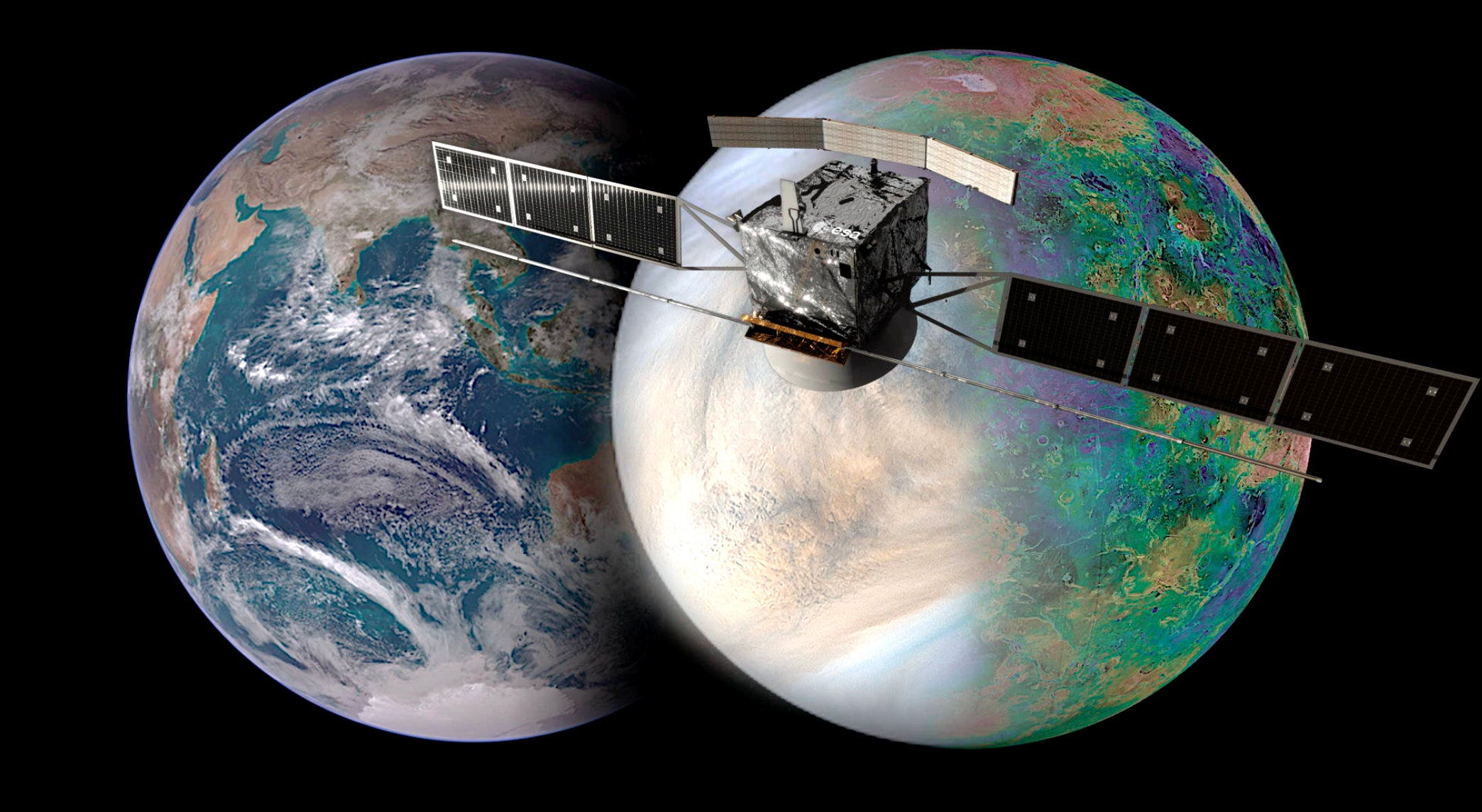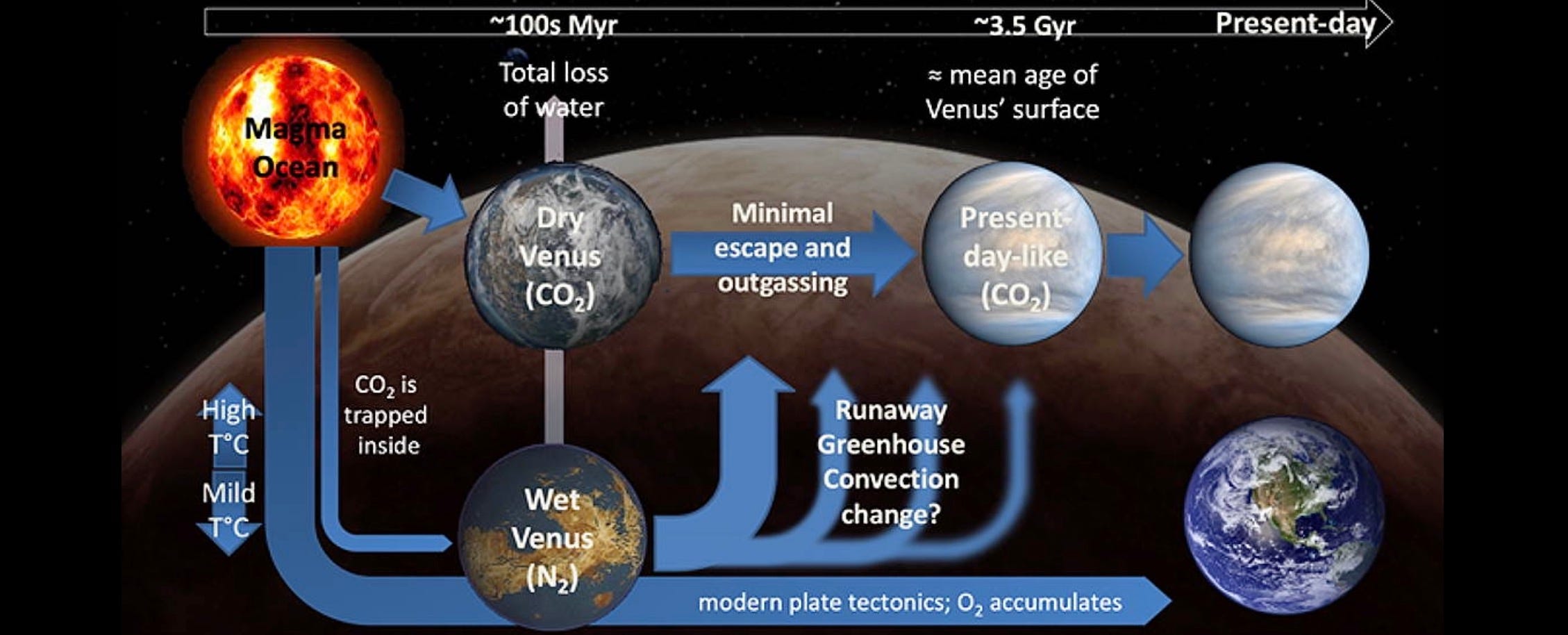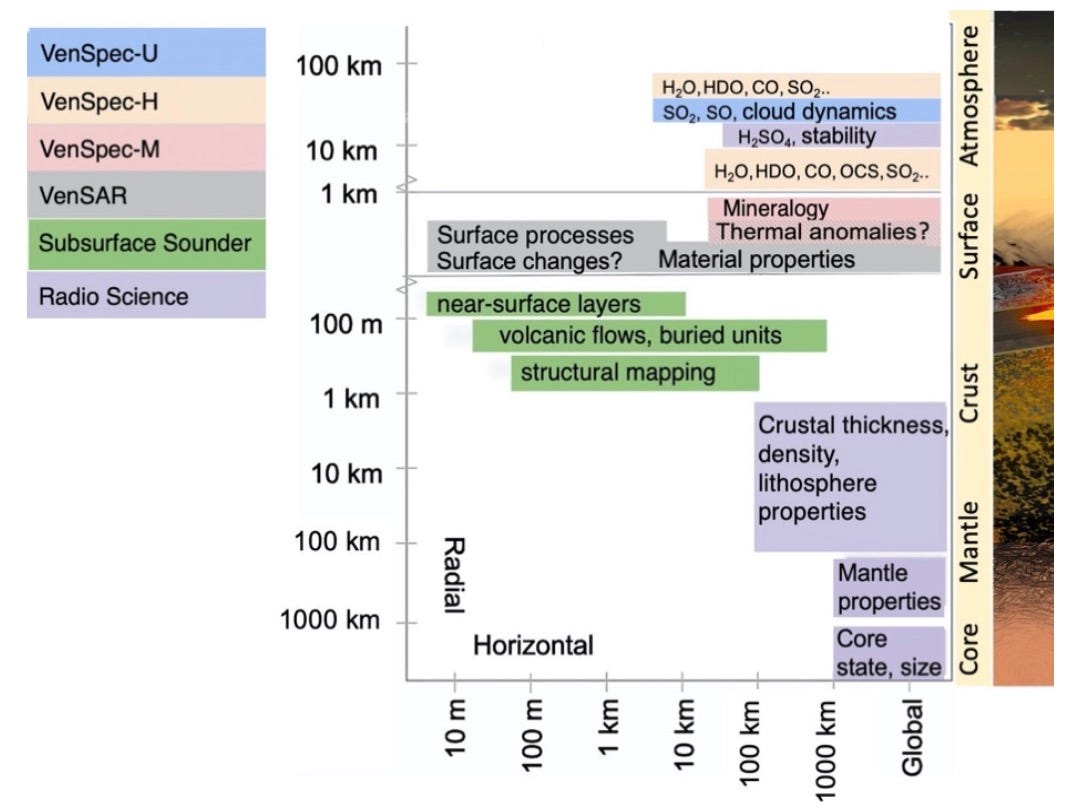EnVision, Europe’s mission to Venus
EnVision will tell us how Earth’s sister planet went from being habitable to hellish.

Venus is a hellscape. Its thick carbon dioxide atmosphere creates a runaway greenhouse effect causing average surface temperatures of 470 degrees Celsius—hot enough to melt lead. Venus’ inhospitable nature is further affirmed by its toxic clouds of sulphuric acid. But it wasn’t always this way.
Past missions to Venus have observed granite-like rocks that require abundant water to form. Scientists think the planet may have had liquid water on the surface for 2 billion years—far longer than Mars, which hosted surface water for a relatively brief 300 million years.
Due to its similar size and bulk composition, Venus seems to have once been the most Earth-like planet in our solar system. And yet it experienced a mysterious, dramatic climate shift while Earth remained habitable. What did Venus experience that drove it from being habitable to hellish? Is its catastrophic natural greenhouse effect a cautionary tale to Earth’s fate?
These are some of the pressing questions that ESA’s mission to Venus, EnVision, aims to answer. EnVision, part of ESA’s Cosmic Vision program, will undertake a holistic study of Venus’ surface, subsurface and atmosphere to help scientists determine the mechanisms by which they interact and evolve. This will help us better understand the chain of events Venus experienced that made it so different from Earth.

The mission will also tell us how similar planets across the universe may evolve, how likely they are to host life, and how we should define habitable zones around stars.
How will EnVision study Venus?
After launching on an Ariane 6 rocket in 2031, EnVision will take about 15 months to reach Venus after which it will enter in an elliptical orbit around the planet. For the the following 16 months, the spacecraft will use Venus’ upper atmosphere to slow down and circularize its orbit to less than 600 kilometers from the planet’s surface to closely observe Venus for years using its state-of-the-art instruments.
While most planetary orbiter missions can use typical spectrometers to identify the composition of an object’s surface and atmosphere, Venus’ thick clouds make it almost impossible to see its surface and lower atmosphere. However, there are a few wavelengths of light Venus’s dense atmosphere is transparent to, and EnVision will have tailor-made spectrometers to look in exactly such little windows of opportunity.
A medium-resolution infrared spectrometer will find out what comprises Venus’ surface and lower atmosphere while an ultraviolet spectrometer will study Venus’ sulphuric acid clouds and the atmosphere above them, the latter of which hosts mysterious dark patches that absorb half the solar energy the planet receives.
How will EnVision find out if Venus is volcanically active?
ESA’s Venus Express orbiter, launched in 2006, gave us our best evidence of active volcanism on Venus when it observed hotspots on its surface and changing sulphur dioxide levels in its atmosphere. EnVision’s high-resolution infrared spectrometer will look for trace amounts of volcanic gases in the planet’s atmosphere, which should confirm if Venus is still volcanically active, and help us understand how the planet maintains such a thick atmosphere despite having no protective magnetic field.
How will EnVision unravel Venus’ past?
EnVision’s medium-resolution infrared spectrometer will map minerals on Venus’ surface and identify the composition of its rocks. This will help us determine if some of Venus’ rocks really did form in the presence of large amounts of water.
NASA’s Magellan orbiter, which mapped Venus in the early 1990s, revealed that all of the planet’s impact craters formed within the last 700 million years. This implies that Venus’ surface was completely reshaped by a global event before that, but exactly what happened is still up for debate. EnVision’s ground penetrating radar will let us see terrain up to a kilometer below Venus’ surface, helping scientists identify direct clues on the matter such as buried craters, layers of lava flows, and related events from the past four billion years.
The radar will also look at what are likely one of the oldest regions on Venus called tesserae: highly deformed terrain that scientists think move like Earth’s continents. If this idea proves true, EnVision’s radar will see them bend and continue below the adjacent lava plains instead of seeing a sharp boundary separating the two landforms. NASA is also contributing a high-resolution radar to EnVision to map Venus’s surface landforms, including tesserae.
We don’t know what tesserae are made of, or what processes shape them. Together, EnVision’s spectrometers and radars will unravel their nature, and how Venus’ surface at large has changed over time.

How will EnVision know what lies in Venus’ interior?
We don’t really know what Venus’ interior is like. Are its core and mantle Earth-like in size? Are their compositions distinct? EnVision will help answer these questions by measuring Venus’ gravity field. As the spacecraft passes over denser and hollower regions of Venus, its position and velocity will be impacted by the changes in gravity. The radio communications instrument onboard will note these finer movements of the spacecraft, allowing scientists to infer its gravity field and from it the likely size of its core, and if its mantle is just as iron-rich as Earth or more or less so.

How are NASA and ESA collaborating to study Venus?
In addition to one of EnVision’s radars, NASA is also providing Earth communications support for the mission with its Deep Space Network. In June 2021, NASA selected two Venus missions—atmospheric probe DAVINCI and orbiter VERITAS—for launch between 2028 and 2030, which will complement EnVision.
VERITAS and EnVision are expected to be active at Venus around the same time. VERITAS’ global radar imaging, with up to three times higher resolution than Magellan, will provide global context to interpret EnVision’s data. And when NASA scientists find something interesting in VERITAS’ data, they can coordinate with ESA to have EnVision take a closer look, enhancing the total scientific output from the missions. Likewise, EnVision will provide context for precise measurements of trace gases and images of tesserae DAVINCI will take from Venus’ atmosphere.
Meanwhile, India’s space agency is finalizing the configuration of its first Venus orbiter mission, Shukrayaan, with a comprehensive instrument suite similar to EnVision’s. It will launch sometime before the end of the decade on a four-year mission to study Venus’ surface, interior, and atmosphere.
Together, these missions will provide us an extremely comprehensive view of Earth’s sister planet for the first time. The 2030s look to be the decade of Venus, and it’s about time.
Originally published at The Planetary Society.
Like what you read? Support me to keep me going.
